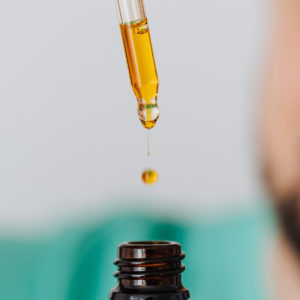Great CBD products back up their claims with lab results, but how do you read a CBD lab report once you have one?
The details found on a lab report are essential when making sure your supplement does what it says.
Was your CBD grown organically?
Does it contain a spectrum of cannabinoids?
Are there any toxins present?
All of these questions can usually be answered with a good lab report. Of course, all the information is meaningless if you don’t know what it means.
Let’s take a closer look at what detailed lab reports contain and how they can help you find a better product.
Give Me All the Cannabinoids
Hemp-based supplements offer some powerful properties, and it’s all thanks to cannabinoids.
These are unique compounds with medicinal properties that grow inside the cannabis plant. The most famous cannabinoid is THC, but it isn’t the only one. CBD is another prominent compound that produces a wide range of therapeutic effects.
Discovered in the 1990s, CBD has quickly gained popularity as a non-habit forming supplement suitable for daily use—found in multivitamins, muscle creams, skincare products, and more.
There are other beneficial cannabinoids out there as well. CBG is earning a spot alongside CBD as a helpful supplement.
Known as the mother cannabinoid, CBG takes a different approach to activate your body’s endocannabinoid system, and when it works alongside CBD, it improves the effects of both.
The more cannabinoids your supplement contains, the better. The hemp plant developed these compounds over time because it gave them a better edge in evolution, and that’s why they can help you.
Checking for Cannabinoids in Your Supplement
Most lab reports contain a section that shows the presence of cannabinoids.
Here, you’ll find a comprehensive list of the different compounds and variants, as well as the percentages contained in your product.
Measurements will come in percentages and milligrams per milliliter. Why not just include percentages, you ask?
Well, some people need to know precise serving amounts for their needs. Because tincture oils come in different strengths, it’s important to know exactly how much CBD/other cannabinoids will be in a dropper.
Pets, for example, shouldn’t have more than 2mg per pound of body weight. If your CBD oil contains 20mg per dropper, but your dog only weighs a few pounds, it’s easy to give them too much. A lab report lets you know to only fill the dropper halfway.
Lab reports also let you compare between products, and since there’s so little regulation on CBD oil supplements, having this kind of information is super helpful.
Many first-time buyers hunt for products at the local smoke shop or by the “sort: price low to high” option online. But after checking a lab report, what seems like a good deal might show itself to be a waste of money.
The more you know, the easier it is for you to make smart decisions about buying quality CBD oil.
Was Your CBD Grown with Care?
While it isn’t exactly easy to get a license to grow hemp in the U.S., recent law changes have made it easier than ever before.
As a result, more growers are trying to get their products into the market. Because these products vary in quality, this influx makes it critical for consumers to shop with caution.
Not only will some products barely work at all, but some may not contain real CBD. If you want to find the best product, look for products made with organic CBD oil.
 Organic products work better, plus they don’t contain any of the synthetic pesticides and fertilizers that come with non-organic products.
Organic products work better, plus they don’t contain any of the synthetic pesticides and fertilizers that come with non-organic products.
The best products will keep as many of the plant’s compounds intact, while cheaper ones will use powder-based isolates in their formulations.
Lab reports provide all the specifics of your product—concentration of cannabinoids, as well as any harmful chemicals or toxins.
Not only will this give you a better understanding of your CBD’s origins, but you may learn a thing or two about chemicals you don’t want going in your body.
Getting Rid of Solvents
Making any hemp-based oil requires the use of a solvent to extract the cannabinoids and other goodies from the actual plant.
It’s a process that usually requires a strong alcohol chemical or CO2.
The second phase of making the oil involves evaporating the solvent from the product. This process generally requires mild heat or dry air, and when performed correctly, the solvents are completely gone by the end.
Lab reports will tell you whether your product is free of solvents, which is important since you don’t want to ingest any harsh chemicals.
There Are Other Toxins, Too
Growing plants of any kind add the possibility for plant-based diseases and fungus.
Some fungus doesn’t matter as much as others. Mold, for example, may not be the most pleasant thing in the world, but in small amounts, it isn’t particularly harmful.
Mycotoxins, on the other hand, can be very dangerous if undetected. This makes having a lab test crucial when shopping for the right product. But that’s not all. Some heavy metals, like lead, can make their way into a hemp crop.
Checking for the presence of mycotoxins and heavy metals is standard for lab tests. It’s unlikely that a vendor would ever knowingly sell a product that contains these dangerous materials, but it never hurts to check.
Lab Reports Put Your Interests First
It may seem like extra effort for a company to pay for lab reports and put them somewhere buyers can find them, but it’s nice to know someone is looking out for your best interests.
Lab reports aren’t cheap, and they can prevent the timely rollout of a product. But this makes them that much more valuable to buyers.
Once you know how to read a CBD lab report, you’ll be able to spot products worth exploring and, more importantly, products that don’t deserve your money.
Ready to shop our huge selection of organic CBD products?
Click here to try one of our delicious gummies.

